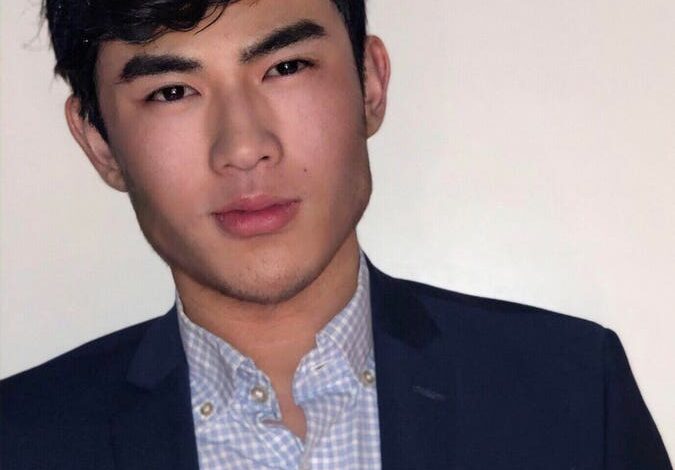Stratodyne: Lessons In Persistence

For all of the focus placed on a few specific startup cities or a handful of elite universities, it’s worth remembering that innovation can come from anyone, anywhere. I recently spoke to Ed Ge, the founder of Stratodyne and a student at the University of Missouri, about his unique experience as both a young founder and working apart from what are typically considered major technological or innovation hubs. We also discussed what he’s learned about persistence in building a company that solves a problem other startups might not consider. Ed founded Stratodyne (short for Stratospheric Dynamics), and is currently based in Columbia, Missouri.
Mary Juetten: When did you start?
Ed Ge: We officially incorporated in July 2020 but our team has been working on the project since January of this year.
Juetten: What problem are you solving?
Ge: We use high-altitude balloon platforms to provide aerial data and remote sensing capabilities for rural areas. Once the data is collected, we use machine learning algorithms to remove the noise and analyze it for operational insights that help our users detect problems like wildlife encroachment or pest infestations that cause billions of dollars in economic damage every year.
Stratodyne founder Ed Ge
Ed Ge
Juetten: Who are your customers and how do you find them?
Ge: Many of our customers are farmers or municipal agencies. Although many have considered using aerial data in the past, few have done so due to concerns about cost and reliability. Existing methods of capturing aerial data such as aircraft and satellites are very expensive to use and have a low refresh rate. By relying on balloons, we can remain over a targeted area for long periods of time and continuously stream data.
We utilize a sales funnel that relies on creating leads through advertising on various industry publications and then using a business to business (B2B) sales team to follow-up and capitalize on the lead. By using this method, we’ve been able to break out of the limitations of a warm market approach and have been able to get in touch with many potential users across various industry sectors.
Juetten: How did past projects and/or experience help with this new project?
Ge: Our project is a derivative of a project one of my co-founders and I have been working on since high school during which we tried to live-stream pictures from weather balloons that we would launch into the stratosphere. The technical expertise we developed laid the groundwork for what we’re doing with Stratodyne.
Juetten: Who is on your team?
Ge: I’ve had the pleasure of leading and working with many other bright and talented people on this project:
- Amit Pinnamaneni is the Chief Technical Officer of Stratodyne. He’s studying for a BS in Computer Engineering at the University of Michigan. I’ve collaborated with Amit since high school on various space-tech projects and he’s proven to be a very capable and conscientious person with experience as a technical consultant and leading teams for the Global Space Balloon Challenge.
- Bryce Edmondson is our Chief Financial Officer. He is currently attending the University of Missouri and is getting a BA in Finance and Economics. He’s a very charismatic person who loves talking to people and is excellent with numbers.
- Victoria Lofland is our Marketing/UX Engineer. She is studying towards a BS in Physics at the University of Missouri and has shown herself to be a driven learner who’s diligent and enthusiastic about her work with Stratodyne.
Juetten: Did you raise money?
Ge: We are backed by Alchemist Accelerator and have also raised a pre-seed round led by TSVC, a major venture capital firm based in Silicon Valley. Outside of that, we are also a finalist for the St. Louis Arch Grants, a program that awards $50,000 grants for startups in the Midwest.
Juetten: Startups are an adventure — what’s your favorite startup story?
Ge: I’ve always been inspired by the story of Peter Beck and RocketLab. They’re a New Zealand-founded company that’s become one of the few companies to develop and successfully operate an orbital launch vehicle. Despite having to overcome many obstacles in their early days and facing a life-or-death struggle to break into the space launch industry, they successfully developed a reliable launch vehicle and have operated missions for everyone from NASA to various universities.
Juetten: Any tips to add for early-stage founders?
Ge: Be audacious and reach out and apply for everyone and everything. The worst-case scenario is that they say no, and it only really takes one or two saying yes to get your company off the ground.
If an investor says no or that you’re too early, try and continue the relationship – at the end of the day, they’re people too, and many of them sympathize with the struggles of being an early-stage or young founder.
Also, remember that nothing is certain. We recently had one angel investor pull out when it seemed all but certain that they would back us – and that was one of the most soul-crushing experiences I’ve ever dealt with. There were so many things I wish I could’ve done differently, but at the end of the day, you’re still responsible for picking up the pieces and moving forward.
Lastly, read about the thought processes and experiences of other entrepreneurs, especially if you are a first-time founder. Learning about how others persevered through difficult times, relaxed despite the stress, or overcame regrets is crucial not only for your company but for your mental health as well. One thing I have found is that internal pressures will tear you apart just as quickly as external pressures. The road of a startup is a lonely one, and maintaining your mental health is just as vital as securing a major partnership or getting investor funding.
Juetten: What’s the long-term vision for your company?
Ge: In the long-term, I see ourselves expanding more into space-tech and pushing forward with developing and improving the capabilities of our platforms. We are also working on several major partnerships that will help bring us into exploring the applications that real-time aerial data can have across industry verticals such as mapping, surveillance, and national security. Although our team has made significant progress in less than a year, we’ve laid out an ambitious plan for the future and can’t wait to see what possibilities will pop up as we launch our pilot program and finalize our partnerships in the next few months.
Thanks to Ed for taking the time to speak with me. For founders of all ages, having the courage to ask is often the biggest hurdle so the lesson is to just ask. It’s hard not to be impressed with what he and Stratodyne are looking to do, or the path they’ve taken to get there. #onwards.
Follow me on Twitter or LinkedIn. Check out my website.





